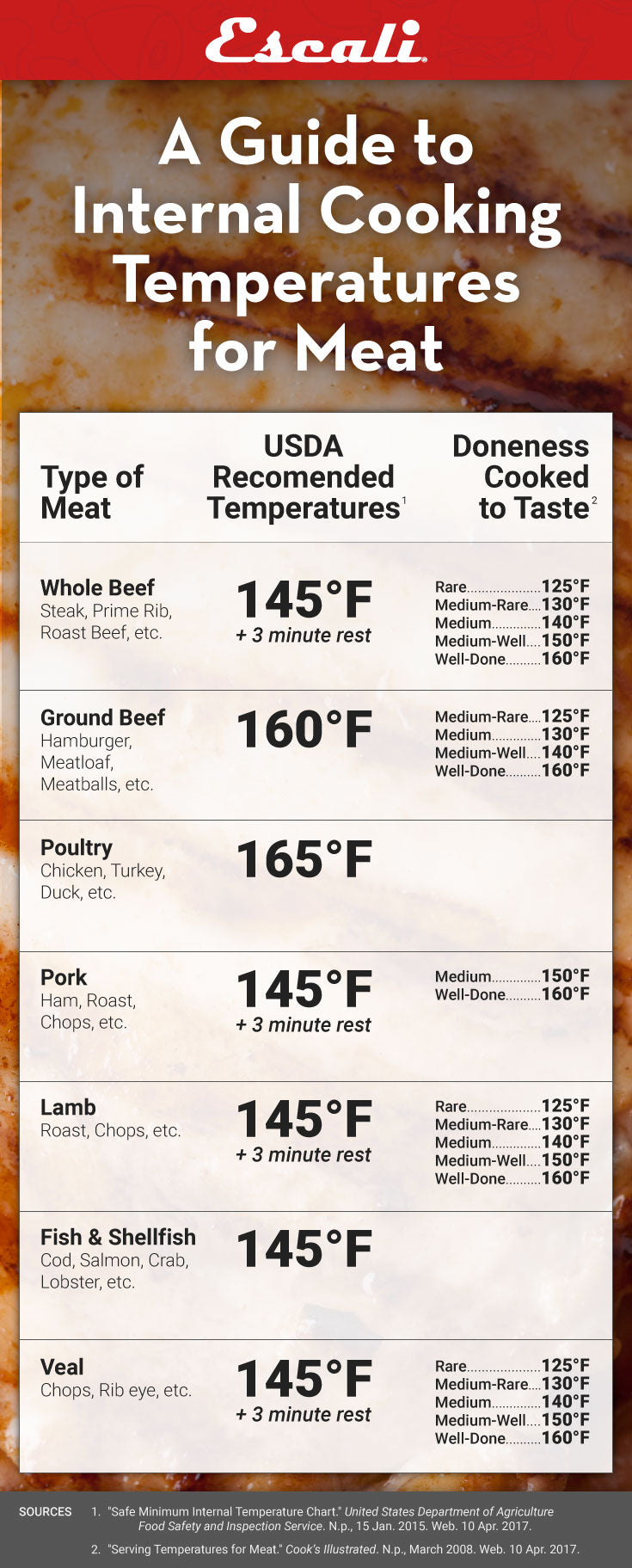Taste Preferences vs. Safety Recommendations
It is important to know internal cooking temperatures when preparing meat because they will help you ensure your food is safe to eat and cooked deliciously with the consistency of a professional chef!
Since people like their meat cooked to varying levels of doneness and doneness is directly related to the internal temperature of the meat, a food thermometer will quickly tell you whether a steak is medium, medium-well or simply not safe to eat yet.
When meat is cooked to taste at a level of doneness below the USDA’s recommend minimum internal serving temperature, it is up to the cook to decide the level of risk they are willing to assume. Always take extra precautions when cooking for those with weak immune systems, children and the elderly. Furthermore, Escali recommends that you follow safe cooking and food handling guidelines created by the USDA and the U.S. Department of Health & Human Services.
What is Doneness?
According to Merriam-Webster, doneness is defined as, “the condition of being cooked to the desired degree.” Often, when cooking meat, doneness is expressed by whether it is rare, medium-rare, medium, medium-well or well-done. It is a technical term more often heard in the food service industry.
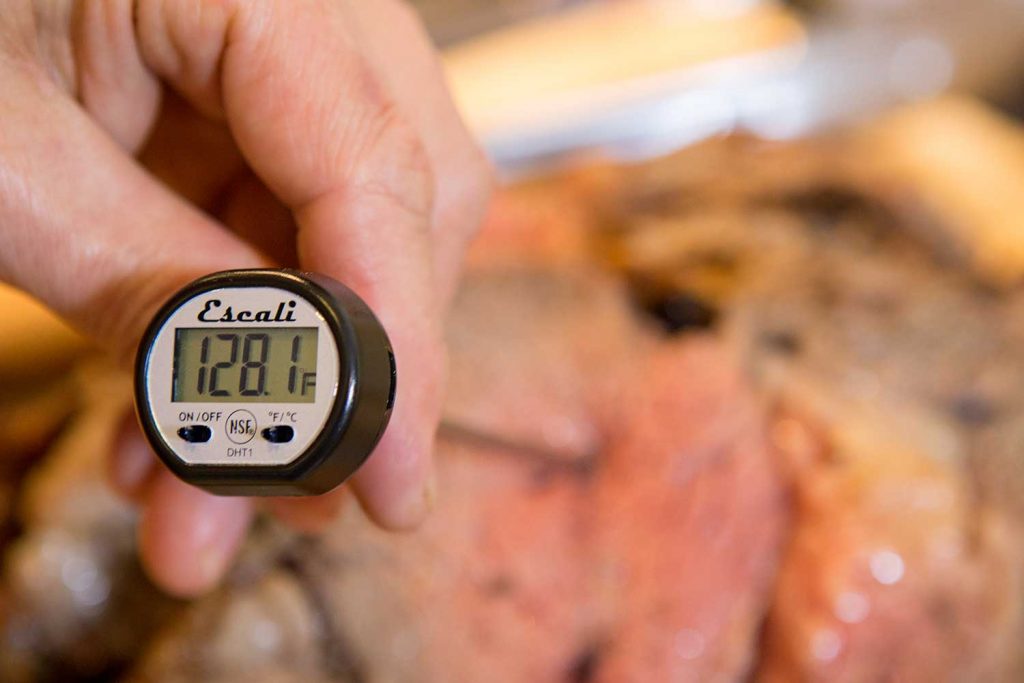
Remove it Early to Avoid Overcooking
Due to a phenomenon commonly known as carryover cooking, meat will continue to cook once it has been removed from an oven or grill. Cook’s Illustrated says this happens when latent heat that is stored in the meat during the cooking process continues to radiate inwards toward the cooler center. How long it will continue to cook itself will depend largely on its mass and the temperature at which it was being cooked.
Bigger, thicker cuts of meat will continue to cook longer than smaller, thinner cuts. Furthermore, meat cooked at a higher temperature will store more latent heat than meat cooked at lower temperatures, so the carryover cooking affect will be more dramatic.
The center of your meat can easily rise 5 to 10 degrees Fahrenheit over the coarse of 10 to 15 minutes after it has been removed from the heat source. If you are targeting a specific level of doneness then you should take large cuts away from the heat source around 10°F under target and smaller cuts at 5°F under the target internal cooking temperature. Finding the exact timing can be hard and is easier to define with experience. However, when in doubt leave the meat on the heat source until you can measure the proper internal serving temperature with a food thermometer.
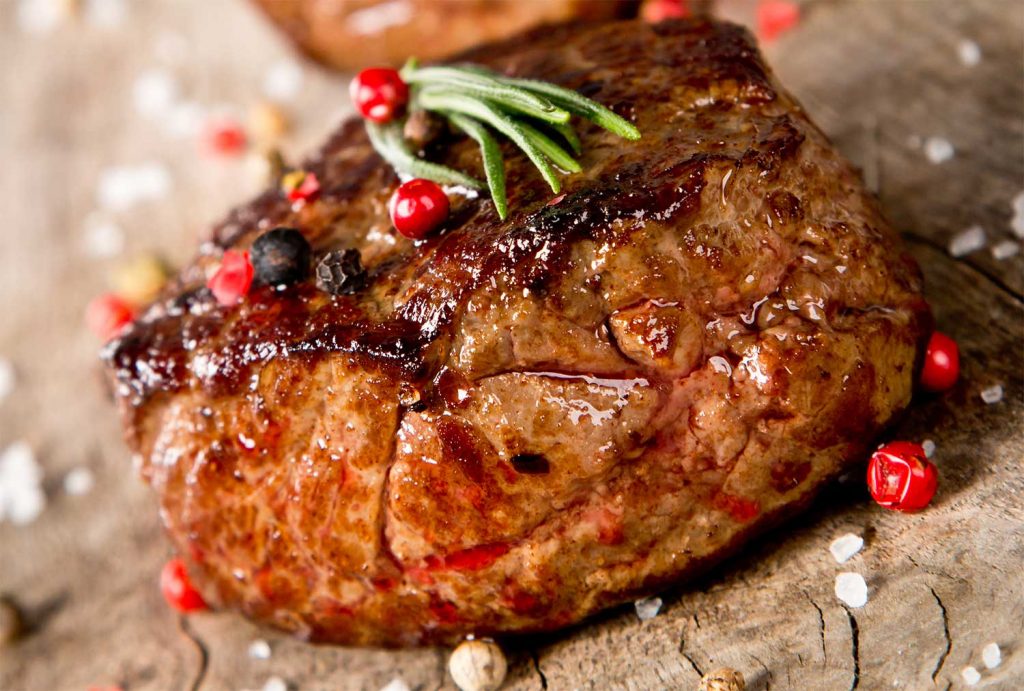
You Should Let Meat Rest After Cooking
There are two reasons why you should let meat rest before cutting or serving, and both warrant your attention.
1. Health & Safety
Most importantly, the USDA recommends that whole beef, pork, lamb and veal cook to a specific minimum internal temperature and then rest for three minutes before serving to ensure it is safe to eat. The rest time allows the meat to be cooked to a slightly lower temperature, which keeps the meat moist and flavorful, while allowing enough time to kill harmful pathogens.
2. Flavor & Texture
J. Kenji López-Alt of SeriousEats.com explains that cutting into meat immediately after removing it from a cooking surface will cause it to loose a lot of flavorful juice. In a study he completed with a series of identically cut and cooked steak filets; Mr. Lopez-Alt documented a 9% drop in weight from juices lost when he cut the steak open immediately after cooking, but only a 2% drop in weight from juices lost when he waited at least 10 minutes before cutting open the steak.
He goes on to explain that muscle fibers around the outside of the actively cooked meat are much warmer due to the direct heat exposure and therefore more contracted and compact. This forces the juices out of the meat and into the pan (creating the sizzle) or into the cooler center where the muscle fibers are open and elongated. After removing the meat from the heat source the outer edges are allowed to cool and loosen. The juice that was concentrated at the center is drawn back into the outer edges, which provides a more even distribution of liquid. Now, when the meat is cut the surface tension of the juice is able to keep itself from spilling onto the plate.
López-Alt claims the most reliable way to know how long to let meat rest after cooking is with a food thermometer. He finds, “no matter how well-done you’ve cooked your meat, you want to allow it to cool down until the very center has reached 120°F (49°C). At this stage, the muscle fibers have relaxed enough that you should have no problem with losing juices.”
The Internal Cooking Temperature Guide
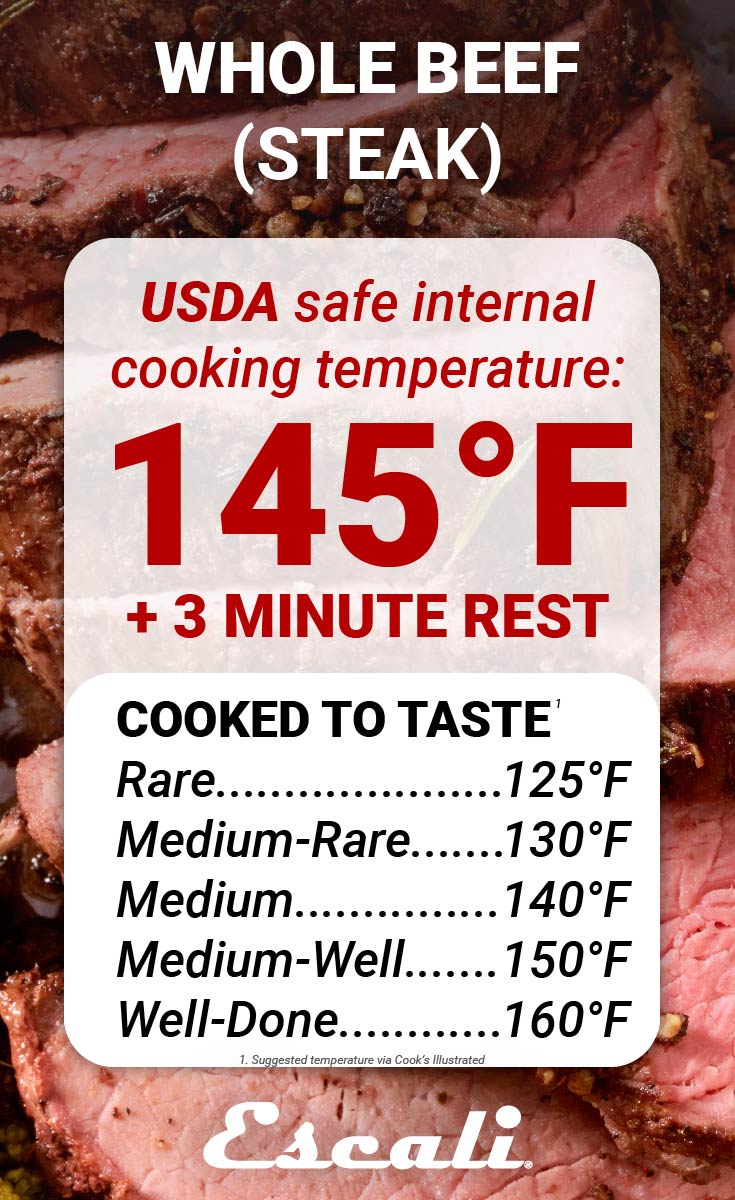
Whole Beef (Steak, Prime Rib, Roast Beef)
According to the USDA, the safest minimum internal cooking temperature for serving whole beef is 145ºF (63ºC) after a 3 minute period of rest. Typically, roast beef or steak would be considered medium when served at this temperature. However, it is common to request for meat to be cooked at varying levels of doneness. To maximize taste and juiciness, Cook’s Illustrated define their optimal internal serving temperatures as follows:
Rare: 125ºF (52ºC)
Medium-Rare: 130ºF (54ºC)
Medium: 140ºF (60ºC)
Medium-Well: 150ºF (66ºC)
Well-Done: 160ºF (71ºC)
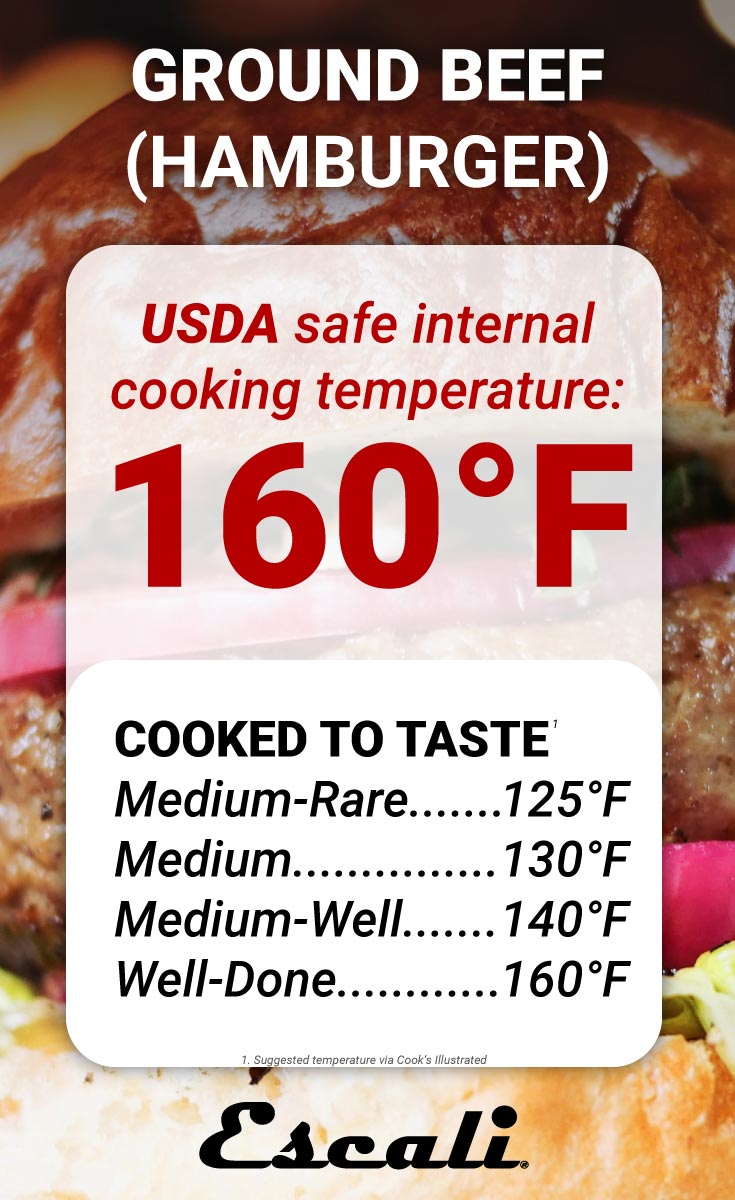
Ground Beef (Hamburger, Meatloaf, Meatballs)
According to the USDA, the safest minimum internal cooking temperature for serving whole beef is 160ºF (71ºC). Typically, hamburger meat would be considered well-done when served at this temperature. However, it is common to request a hamburger to be cooked at varying levels of doneness. To maximize taste and juiciness, Cook’s Illustrated define their optimal internal serving temperatures as follows:
Medium-Rare: 125ºF (52ºC)
Medium: 130ºF (54ºC)
Medium-Well: 140ºF (60ºC)
Well-Done: 160ºF (71ºC)
Note: Ground meats are more likely to be contaminated with food-borne pathogens. Therefore, the USDA recommends that you always serve ground meat with a minimum internal temperature of 160ºF (71ºC).

Poultry (Chicken, Turkey, Duck)
According to the USDA, the safe minimum internal cooking temperature for serving poultry is 165ºF / 74ºC. In general, there are no levels of doneness when cooking poultry. At 165ºF the chicken, turkey or duck become safe to eat, so cooking it any longer will only dry out the meat.
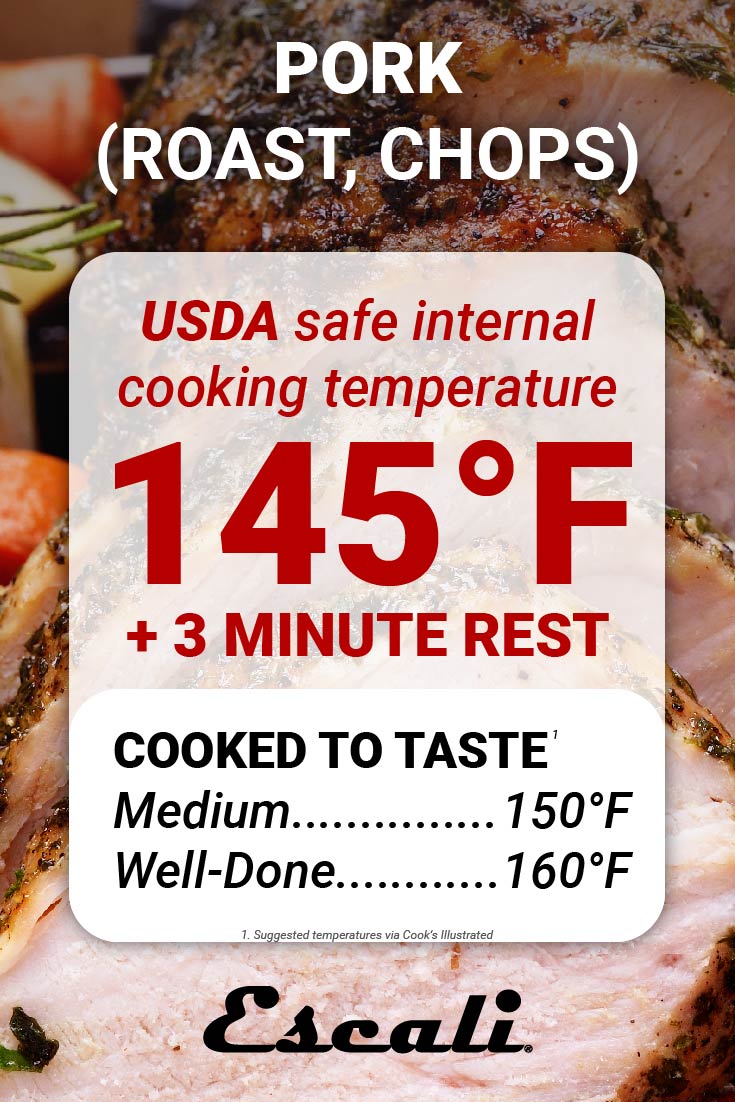
Pork (Ham, Roast, Chops)
According to the USDA, the safest minimum internal cooking temperature for serving pork is 145ºF (63ºC) after a 3 minute period of rest. Typically, pork would be considered close to medium when served at this temperature. However, it is common to request for meat to be cooked at varying levels of doneness. To maximize taste and juiciness, Cook’s Illustrated define their optimal internal serving temperatures as follows:
Medium: 150ºF (66ºC)
Well-Done: 160ºF (71ºC)
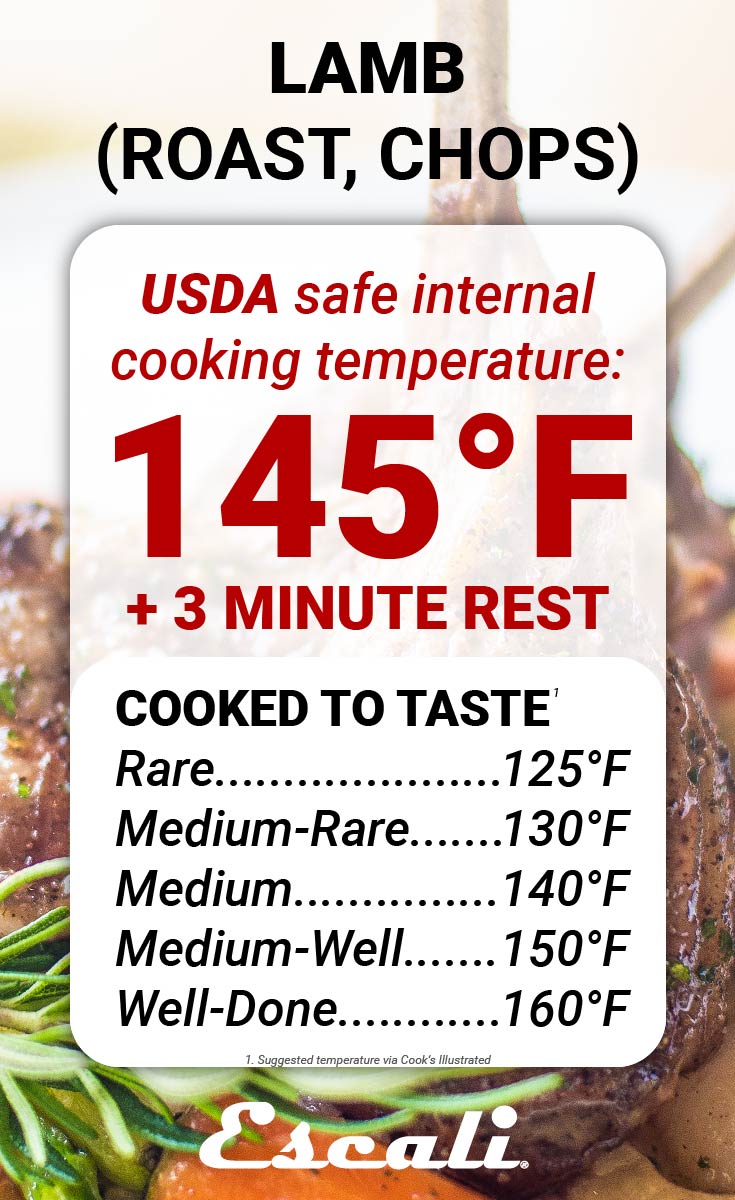
Lamb (Roast, Chops, Kebabs)
According to the USDA, the safest minimum internal cooking temperature for serving lamb is 145ºF (63ºC) after a 3 minute period of rest. Typically, lamb chops would be considered medium when served at this temperature. However, it is common to request for meat to be cooked at varying levels of doneness. To maximize taste and juiciness, Cook’s Illustrated define their optimal internal serving temperatures as follows:
Rare: 125ºF (52ºC)
Medium-Rare: 130ºF (54ºC)
Medium: 140ºF (60ºC)
Medium-Well: 150ºF (66ºC)
Well-Done: 160ºF (71ºC)
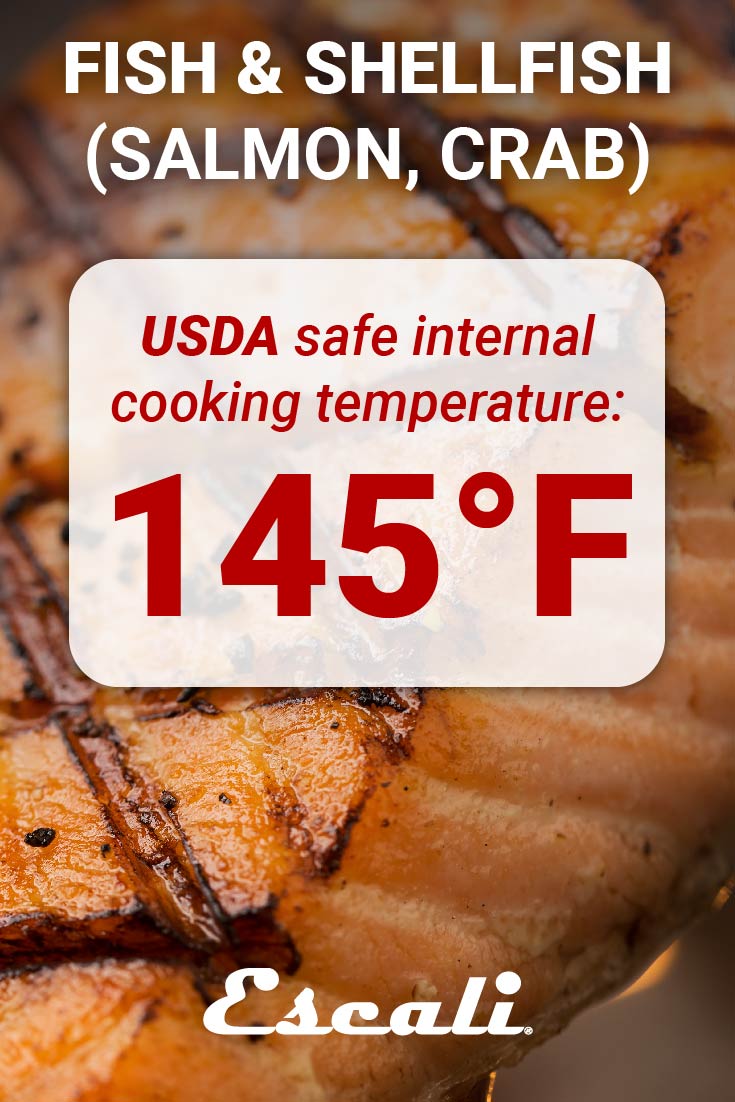
Fish & Shellfish (Salmon, Cod, Lobster, Crab)
According to the USDA, the safe minimum internal cooking temperature for fish and shellfish is 145ºF / 63ºC. In general, there are no levels of doneness when cooking fish. At 145ºF the fish becomes safe to eat, so cooking it any longer will only dry out the meat.
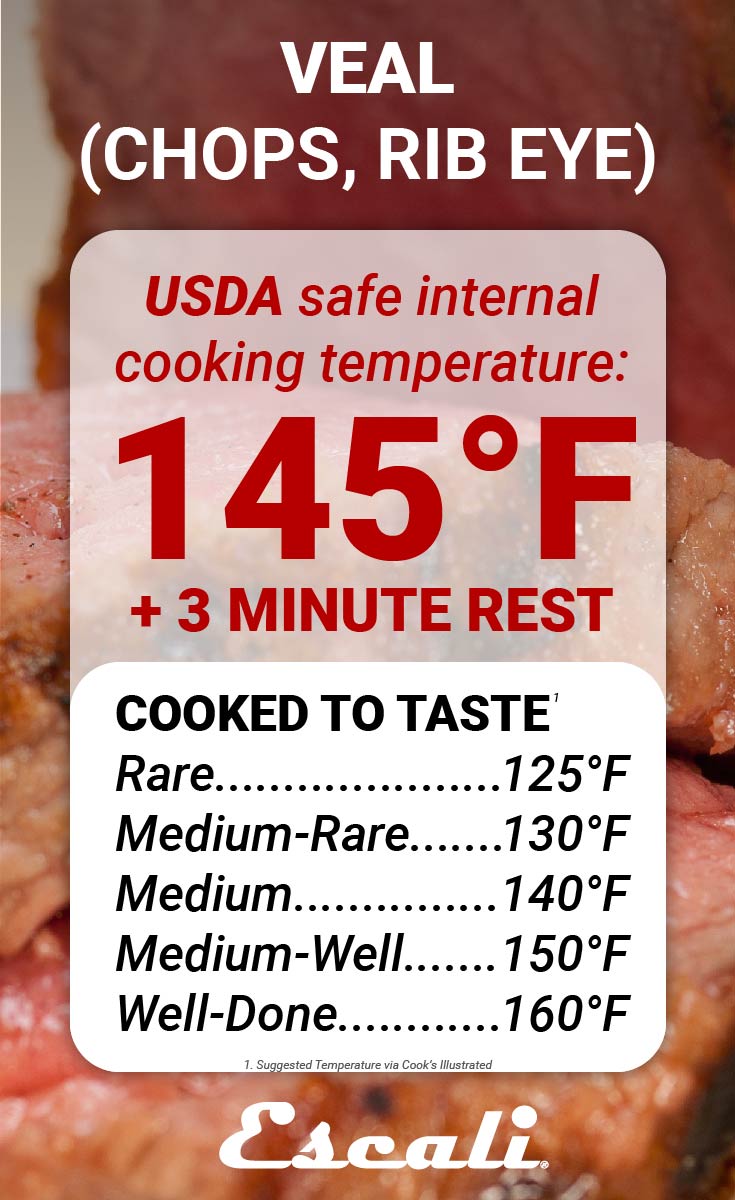
Veal (Chops, Rib Eye)
According to the USDA, the safest minimum internal cooking temperature for serving veal is 145ºF (63ºC) after a 3 minute period of rest. Typically, veal chops would be considered medium when served at this temperature. However, it is common to request meat cooked at varying levels of doneness. To maximize taste and juiciness, Cook’s Illustrated define their optimal internal serving temperatures as follows:
Rare: 125ºF (52ºC)
Medium-Rare: 130ºF (54ºC)
Medium: 140ºF (60ºC)
Medium-Well: 150ºF (66ºC)
Well-Done: 160ºF (71ºC)
